Category: By Subject
- Home
- /
- Shop
- /
- By Subject
- /
- Page 2
Showing 21–40 of 1567 resultsSorted by latest
-
Sale!
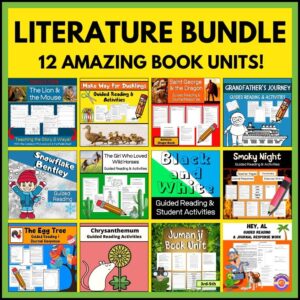 Buy Now
Buy Now$40.50Original price was: $40.50.$32.00Current price is: $32.00.This BUNDLE offers 12 fun and engaging book units, all offering guided reading questions and student activities designed to increase student interest, test student comprehension, help students use critical thinking skills and explore their creativity.
Includes the following units:
- Black and White | Caldecott Book Unit
- Chrysanthemum Book Unit
- The Girl Who Loved Wild Horses | Caldecott Book Unit
- The Lion and the Mouse | Teaching Aesop’s Fable 2 Ways
- Smoky Night | Caldecott Book Unit
- The Egg Tree | Caldecott Book Unit
- Make Way for Ducklings Guided Reading and Activities
- Saint George and the Dragon | Caldecott Book Guided Reading
- Jumanji Book Guided Reading Unit
- Hey, Al – A Guided Reading Unit
- Grandfather’s Journey | Caldecott Book Guided Reading Activities
- Snowflake Bentley Guided Reading
-
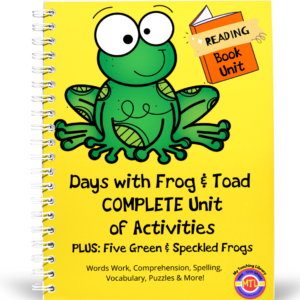 $3.00Buy Now
$3.00Buy NowA fun and complete book unit to use alongside Arnold Lobel’s Days with Frog and Toad! This 41- page book unit will provide students with word work, spelling, reading comprehension activities, puzzles plus (as an added bonus) fun with “Five Green and Speckled Frogs“!
-
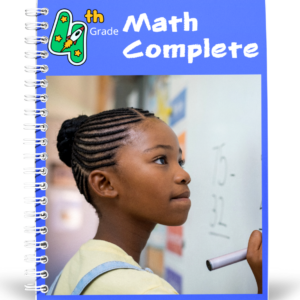 $35.00Buy Now
$35.00Buy Now4th Grade Math Complete is an 9 unit program that covers all of the important skills and concepts typically covered in 4th grade. Each unit includes the student and teacher edition. This resource can be used within a classroom setting, co-op or with individual students. Because it can be used within a group setting, you’ll find many activities for students to complete in pairs of 2. If you are homeschooling multiple children close in age, it would be easy to adapt and teach students together. If you are homeschooling a single child, you can easily adapt these activities through your one-on-one interaction!
Unit 1: Factors and Multiples
Unit 2: Fraction Equivalence and Comparison
Unit 3: Operations to Fractions
Unit 4: Hundredths to Hundred-Thousands
Unit 5: Multiplicative Comparison and Measurement
Unit 6: Multiplying and Dividing Multi-digit Numbers
Unit 7: Geometry – Angles and Angle Measurement
Unit 8: Geometry – Two Demensional Shapes (Properties)
Unit 9: Putting it Together (Round-up)See description below for further details.
-
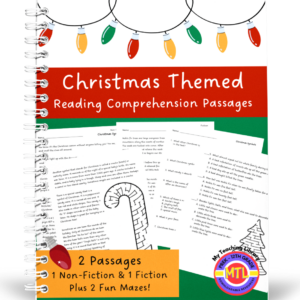 $3.25Buy Now
$3.25Buy NowTwo Christmas themed reading comprehension activities that can be used for extra practice or as an assessment on student ability to comprehend what they read.
Includes both a fiction and a nonfiction passages!Fiction passage title: Nobel Fir|A Christmas Tree
Nonfiction passage title: Christmas SymbolsAfter students read a passage, they will answer either multiple choice or short answer questions. A FUN maze is also included for each!
-
 $20.00Buy Now
$20.00Buy NowAn easy-to-understand, comprehensive High School Grammar curriculum that takes an in-depth look at grammar terms and concepts. You’ll find practice exercises at the end of each chapter to help students test and correct their comprehension. No teacher guide needed. Answer Keys included!
-
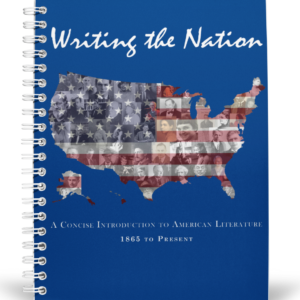 $10.00Buy Now
$10.00Buy NowStudent will encounter a comprehensive collection of American Literature from 1865 to the present and includes over seventy-five short stories, poems, and novel selections that encompass the distinct writing styles of the writers and eras. The text takes students on an academic journey from the period of Late Romanticism to Modernism and the present. Each chapter begins with brief writer bios and includes a concise introduction to the time period and how certain societal, economical, and political factors influenced writers in that era.
Featured authors and poets include favorites such as Walt Whitman, Mark Twain, and Flannery O’Conner among many more. This anthology provides an opportunity for students to engage in extensive analysis of American works, both past and present.
Want American Literature prior to 1865? Exploration of American Literature
World Literature also available!
-
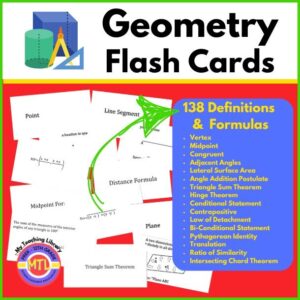 $3.75Buy Now
$3.75Buy Now138 Geometry flashcards ready to print and use within a high school level classroom. Teaching a lower-level class? Use the terms that fit the class level!
-
 $10.00Buy Now
$10.00Buy NowAn Exploration of American Literature from Precolonial to Post-Revolution features sixty-nine authors and full texts of their works, the selections in this open anthology represent the diverse voices in early American literature. This completely-open anthology will connect students to the conversation of literature that is embedded in American history and has helped shaped its culture.
Features:
- – Contextualizing introductions from Pre- and Early Colonial Literature to Early American Romanticism
- – Over 70 historical images
- – In-depth biographies of each author
- – Instructional Design, including Reading and Review Questions
Preview a video of this product
Recommended for upper-level High School studentsAlso available: Introduction to American Literature | 1865 to the Present
-
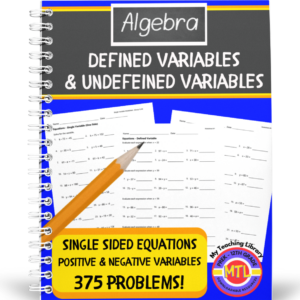 $4.50Buy Now
$4.50Buy NowGive students the practice they need when learning to solve one-step, one-variable, defined and undefined equations!
This resource provides 15 different worksheets, for a total of 375 problems.
All equations in this set of worksheets use only the properties of addition and subtraction, can be solved in one-step.
There are 3 groups of worksheets:
Group 1: Defined variables are all positive numbers less than 100.
Group 2: Defined variables are both positive and negative numbers, greater than -100 and less than 100.
Group 3: Undefined variables will be positive numbers (when found).Answer Keys included
-
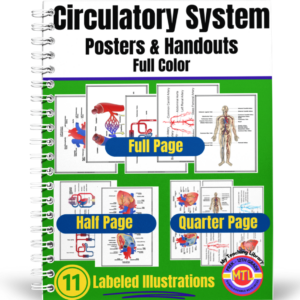 $4.00Buy Now
$4.00Buy Now11 colorful, labeled illustrations of the complete circulatory system to use in a Science (Biology / Anatomy) classroom as posters and handouts! Illustrations / diagrams are full page, 2 per page (half page) and 4 per page (quarter page).
Suggested to use with: Circulatory System | Coloring Workbook (or) Biology – Anatomy Coloring Workbooks Bundle
-
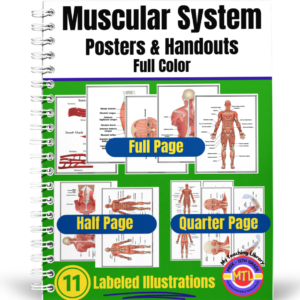 $4.00Buy Now
$4.00Buy Now11 colorful, labeled illustrations of the complete muscular system to use in a Science (Biology / Anatomy) classroom as posters and handouts! Illustrations are full page, 2 per page (half page) and 4 per page (quarter page).
Suggested to use with: Muscular System | Coloring Workbook (or) Biology – Anatomy Coloring Workbooks Bundle
-
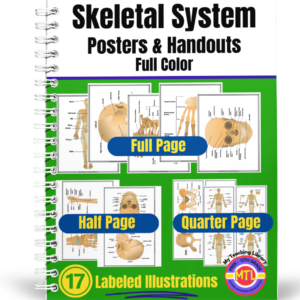 $5.00Buy Now
$5.00Buy Now17 colorful, labeled illustrations of the complete skeletal system to use in a Science (Biology / Anatomy) classroom as posters and handouts! Illustrations are full page, 2 per page (half page) and 4 per page (quarter page). Suggested to use with: Skeletal System | Coloring Workbook (or) Biology – Anatomy Coloring Workbooks Bundle
-
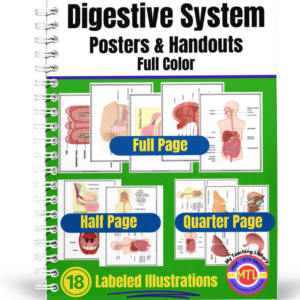 $5.00Buy Now
$5.00Buy Now18 colorful, labeled illustrations of the complete digestive system to use in a Science (Biology / Anatomy) classroom as posters and handouts! Illustrations are full page, 2 per page (half page) and 4 per page (quarter page). Suggested to use with: Digestive System | Coloring Workbook (or) Biology – Anatomy Coloring Workbooks Bundle
-
Sale!
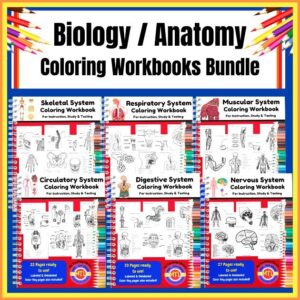 Buy Now
Buy Now$30.00Original price was: $30.00.$25.00Current price is: $25.00.Bundle of all six of My Teaching Library’s Biology / Anatomy Coloring Workbooks. Each workbook is complete and detailed, perfect for instruction, study and even testing high school level Biology and Anatomy students.
Included illustrations (diagrams) all have three types of pages:
a: labeled (great for instruction, use as a handout, poster or answer key)
b. unlabeled with blank color key (student coloring worksheet)
c. unlabeled (student page for study or an assignment, quiz or test having students label each part)Detailed teacher notes are included which give suggestions on the use of each.
-
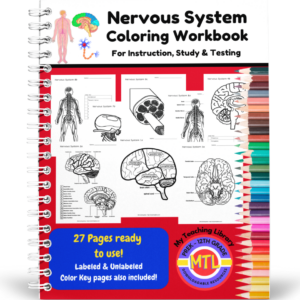 $5.00Buy Now
$5.00Buy NowComplete and detailed, this Nervous System Coloring Workbook is perfect for instruction, study and even testing high school level Biology and Anatomy students. There are 9 different illustrations (diagrams) and each have three types of pages:
a: labeled
b. unlabeled with blank color key
c. unlabeled
Detailed teacher notes are included which give suggestions on the use of each. -
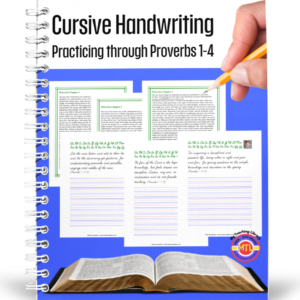 $8.00Buy Now
$8.00Buy NowThis resource has been created with three purposes in mind:
- 1st- To give students an opportunity to practice cursive handwriting
- 2nd- To allow students to read (and think) about scripture while they are practicing their handwriting
- 3rd- The resources provide an opportunity for parent/teacher and student(s) to converse about scripture and how to apply to their everyday lives.
There are 61 pages for students to practice their cursive handwriting skills. Each page will have students writing scripture, starting with Proverbs 1 and work through Proverbs 4.
-
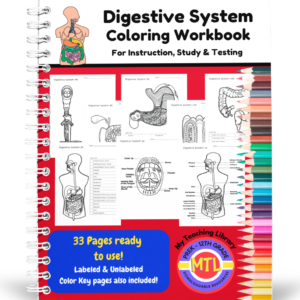 $5.00Buy Now
$5.00Buy NowComplete and detailed, this Digestive System Coloring Workbook is perfect for instruction, study and even testing high school level Biology and Anatomy students. There are 11 different illustrations (diagrams) and each have three types of pages:
a: labeled
b. unlabeled with blank color key
c. unlabeled
Detailed teacher notes are included which give suggestions on the use of each.
(Suggested color posters and handouts to use with this resource: Digestive System | Posters and Handouts) -
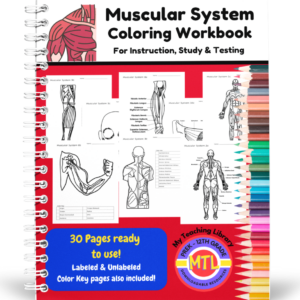 $5.00Buy Now
$5.00Buy NowComplete and detailed, this Muscular System Coloring Workbook is perfect for instruction, study and even testing high school level Biology and Anatomy students. There are 10 different illustrations (diagrams) and each have three types of pages:
a: labeled
b. unlabeled with blank color key
c. unlabeled
Detailed teacher notes are included which give suggestions on the use of each. -
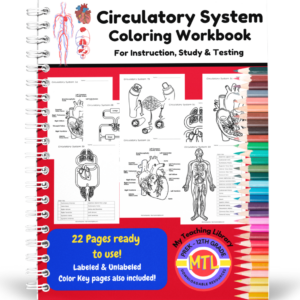 $5.00Buy Now
$5.00Buy NowComplete and detailed, this Circulatory System Coloring Workbook is perfect for instruction, study and even testing high school level Biology and Anatomy students. There are 7 different illustrations (diagrams) and each have three types of pages:
a: labeled
b. unlabeled with blank color key
c. unlabeled
Detailed teacher notes are included which give suggestions on the use of each. -
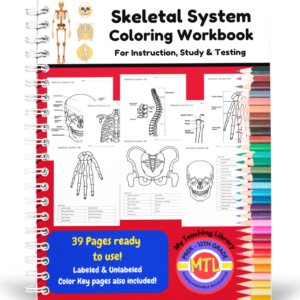 $6.00Buy Now
$6.00Buy NowComplete and detailed, this Skeletal System Coloring Workbook is perfect for instruction, study and even testing high school level Biology and Anatomy students. There are 13 different illustrations (diagrams) and each have three types of pages:
a: labeled
b. unlabeled with blank color key
c. unlabeled
Detailed teacher notes are included which give suggestions on the use of each.

